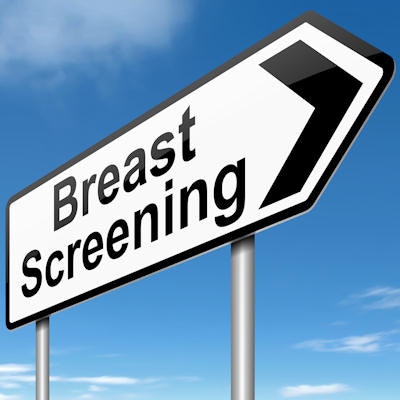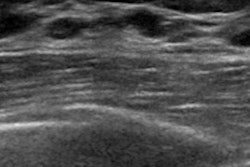
Double reading of mammography screening exams -- and using a third reader or a consensus process to resolve any interpretation discrepancies -- increases the number of cancers detected and reduces recalls, according to a study published online April 10 in Radiology.
But whether the additional cancers detected with a double-reading protocol are clinically significant remains a matter of debate, wrote a team led by Sian Taylor-Phillips, PhD, of the University of Warwick in Coventry, U.K.
"Use of a second radiology reader in breast cancer screening can increase the number of cancers detected," the group wrote. "However, the clinical importance of these cancers requires careful consideration, as some may be overdiagnosed."
Pros and cons
There has long been debate about the pros and cons of double reading in screening mammography. Some studies suggest that the practice finds more cancers, but they also show that it results in more recalls and requires more resources. And some researchers point out that double reading may result in more detection of ductal carcinoma in situ (DCIS) and overdiagnosis.
"[Double reading] might increase the detection of small (< 15 mm) cancers and identify a higher ratio of [DCIS] to invasive cancers, which is potentially undesirable because of the association between DCIS and overdiagnosis," the group wrote.
To investigate the effect of a double-reading protocol on recall and cancer detection rates, Taylor-Phillips and colleagues used a year's worth of data from 805,206 women culled from 33 breast screening centers in England. Two readers reviewed each mammogram and were aware of whether they were the first or second reader.
With the exception of 12 centers that blinded second readers to the decisions of the first one, radiologists could view other readers' interpretations in the patient's record; of all the centers, 11 sites conducted arbitration to resolve disagreements between interpretations with a third reader, while the remaining 22 used a consensus process. The researchers then examined the number of cancers detected and the number of recalls with one reader alone compared with double reading (plus any arbitration).
Overall, a total of 7,055 cancers were detected, with a mean pathologic size of 16.5 mm. Of these, 77.3% were invasive. Most of the invasive cancers were grade 2 (54.3%) and axillary node negative (76.7%). DCIS alone was identified in 22.7% of cancers; most of these were high grade (63.1%).
Second readers identified an additional 627 cancers that first readers did not. Compared with the cancers identified by first readers, these additional cancers were less likely to be invasive, and if they were invasive, they tended to be lower grade. The additional cancers were also smaller, and if they were DCIS, they were likely to be lower grade. As for recalls, after arbitration, the rate was 4.08%, while the rate for first readers was 4.76%. If there had been no arbitration and women had been recalled if either reader recommended it, the recall rate would have been 6.19%, the authors wrote.
| Recall rates and characteristics of cancers detected with double-reading protocol | |||
| Parameter | 1st reader only | 2nd reader only | Double reading plus arbitration |
| Recalls | 4.76% | 1.4% | 4.08% |
| Cancers detected | 0.8% | 0.08% | 0.88% |
| Invasive disease | |||
| Grade 3 | 20.9% | 14.9% | 20.4% |
| Grade 2 | 54.5% | 52.8% | 54.3% |
| Grade 1 | 24.7% | 32.3% | 25.3% |
| Mean size of invasive cancers | 16.7 mm | 14.2 mm | 16.5 mm |
| DCIS grade | |||
| High | 63.9% | 56.9% | 63.1% |
| Intermediate | 27.2% | 26.1% | 27.1% |
| Low | 8.9% | 17% | 9.9% |
"Double reading with arbitration ... resulted in recall of fewer women for further tests than would have been recalled if only the first reader decision was used," the group noted.
Costs and benefits
The study suggests that double reading of mammography screening exams improves the technology's performance. But this improvement should be considered in the context of a larger benefit analysis framework, Taylor-Phillips and colleagues wrote.
"Detecting these extra cancers may be associated with detecting important pathologic findings earlier, but it may also be associated with increased overdiagnosis from screening," the researchers wrote. "Further analysis of follow-up data on outcomes is [needed]."
In the end, improved mammography screening performance may come down to teamwork, according to Taylor-Phillips and colleagues.
"Policymakers should consider the overall harms and benefits when deciding whether to use a second reader, bearing in mind that a single reader might not perform the same way a first reader working as part of a team might," they concluded.




















